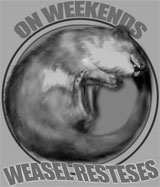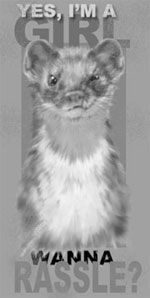Doggerland, sweet Doggerland
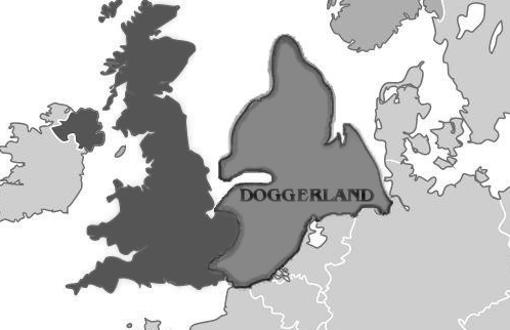
The Society of Antiquaries of London is an interesting bunch. Founded in 1707, their remit is the past.
That’s a pretty broad area of study. Just about everybody thinks something in the past is interesting.
Fortunately for lovers of the past, the SAL puts many of their lectures on their YouTube channel. There’s some awesome stuff in there, for free.
Even better – next week, they’re hosting a two-day exploration of Doggerland: Lost Frontiers and Drowned Landscapes in Britain and Beyond. And it’s also free!
I’ve done several study courses and online events via Zoom, and it’s just the best. Big thermos of coffee, comfy chair, feet up, tablet in my lap, smart people telling me stories. I could do this every day.
I don’t know how 9:30 to 5:30 Limey Time aligns with your timezone, but check it out if you’re interested. You are interested, aren’t you? *squints*
April 28, 2021 — 7:44 pm
Comments: 10
Our great grandparents were weird

Sometimes, I try to get into the mindset of a Victorian. They were a very peculiar people. I came across this story today. I won’t spoil it, though you can see what’s coming a mile away. I’ll just say, my reaction to that event would have been very, very different.
They had unfathomable viewns about death. Like the man who stuffed kittens and posed them in huge dioramas. Kittens are cute, he reasoned, so…? I’ve blogged about him before. (Post includes a link to the horrifying but entertaining crappy taxidermy site).
Walter Potter’s museum of dead animals was broken up and sold in 2003, though they have since gotten a number of pieces together again to show more than once.
Here’s more about Potter from Steyning Museum, which would have been local to the original collection. They tried, and failed, to buy some pieces for their collection (too expensive).
I sat next to a woman from Steyning Museum at a historical do once. She didn’t want to talk about the kittens.
April 7, 2021 — 8:05 pm
Comments: 17
Huh.
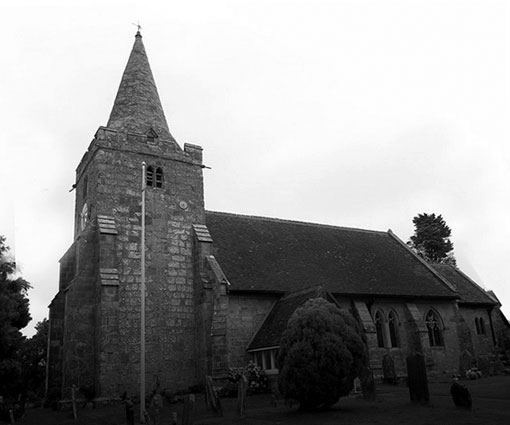
The nearby village of Dallington, one of whose sons perished in Custer’s Last Stand.
Turns out, it’s not a very interesting story. They’re not sure what the guy’s name was or if it’s even true.
But I was surprised to read that 700 went in, but 268 died. I thought they were wiped out to a man.
We visited Little Bighorn when I was a kid. They buried the men where they fell and marked them with tombstones. There was one way off on a hill and my dad said to me, “look, that guy was running away.”
Wikipedia tells me Dallington Church was torn down in 1864 and rebuilt somewhere else. Just the old 15th C tower and spire were re-used.
Okay, you know what? That’s not very interesting either.
April 6, 2021 — 8:34 pm
Comments: 10
Murder to hoover
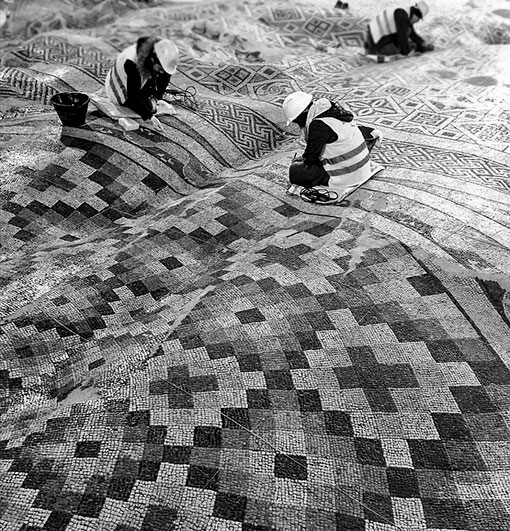
Not a carpet. Tile floor rucked up by centuries of earthquakes.
This family in Turkey wanted to build a hotel on land they owned, but because it was in a historical section they had to do an archaeological survey to see if there were any ruins. There were. And how. Traces of over a dozen different civilizations were found down there.
So they built the hotel on giant pylons right over the ruins, and the archaeologists just kept working. Pretty cool.
That tile floor is 4th Century and the largest single mosaic ever found.
Yeah, that’s right. I’m reduced to sourcing an article from the Daily Mail.
March 31, 2021 — 8:07 pm
Comments: 9
But what does it meeeean?

Not a lot is known about the Mesolithic in Britain – it starts just after the last Ice Age ended 11,000 years ago and ends 5,300 years ago with the beginning of agriculture, pottery and barrow building. So nothing left but rocks, basically.
But someone poking around an agricultural field in Yorkshire discovered it was a silted up ancient lake. Or, to be more precise, a peaty lake. And we know how good peat is at preserving things.
All kinds of cool things have since been dug up at the site, now called Star Carr. Like Britain’s oldest house (okay, a series of postholes) and those nifty antler hats. And this pendant, which is carved out of shale. They call it the oldest bit of Mesolithic artwork yet found in Britain.
But was it art? The lines are barely visible (they’ve been enhanced here). Such shallow cuts…I wonder if it was a counter of some kind. Or even a map.
The article at the link compares them to Danish amber jewellery of about the same time. I see the similarities, but the “barbed line technique” looks clearly decorative.
The Star Carr pendant looks like information to me, like it was somewhat quickly scratched into the surface. A crib sheet?
I’m getting in to this prehistory stuff. Have a good weekend, everyone!
March 26, 2021 — 7:39 pm
Comments: 12
They were different then

If you were anywhere near social media yesterday, you probably saw this story, but I wanted more than the tweet version.
In 1930, Indiana Bell needed a new headquarters because the old one was too small. They wanted it on the same lot, but the old building had to keep functioning throughout. So they moved the building sixteen yards South, rotated it 90 degrees and then moved it 30 yards West and built the new building on the spot it had just vacated.
It moved about fifteen inches a month, mostly by way of hand-operated jacks. When all the jacks were pumped, the building moved 3/8 of an inch.
The building was fully functional the whole time: gas, electricity, sewage, phone. There was a wooden sidewalk built in the shape of an arc around the movement.
The original building was demolished in 1963. 🙁
More story from Kottke, Amusing Planet, Wikipedia. Animation: YouTube, GIF.
March 22, 2021 — 7:58 pm
Comments: 7
The most beautiful bong in the world
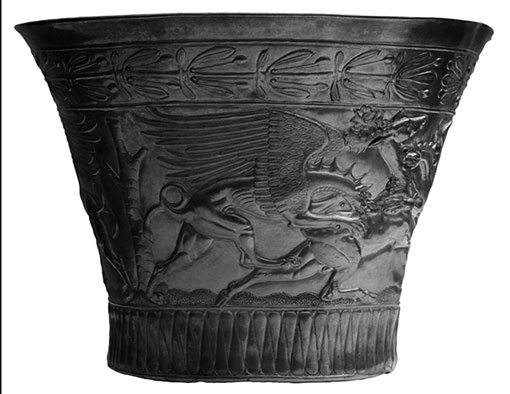
This is a find from a few years ago in Russia. Archaeologists were excavating the area to make room for power lines and found an ancient burial mound. It had clearly been plundered several times so they didn’t expect much, but at the bottom was a hard clay layer that seemed like a natural feature.
It wasn’t. Underneath was an intact burial, a rich find including this and another gold bowl.
It’s Scythian, a somewhat vague term for a nomadic people who operated 2,500 years ago in a huge area encompassing Western China, East to the Danube. Herodotus the Greek historian wrote about them.
When chemists analyzed the residue in the bowls, they found both opium and cannabis. One source said they were mixed in a drink, but another described it as smoking opium while using cannabis as incense. The latter backs up the description by Herodotus that “Scythians used a plant to produce smoke that no Grecian vapour-bath can surpass which made them shout aloud.”
He went on to add, “those guys were totally shitfaced. I mean, they were high off their asses all the time.”
What is it with these people and the assassins getting all shouty and stabby on cannabis? All I ever wanted to do was eat Hostess Ding Dongs and watch cartoons.
As usual, the best overview I found on this was from Ancient Origins, an embarrassing woo site. I guess because they key in on the quirky stories. But here it is from Archaeology, a more respectable choice. And one from the Independent, for good measure.
March 16, 2021 — 8:16 pm
Comments: 10
Lotta Zooming

Monday is the only day this week I haven’t had a Zoom meeting. Most of them were elective seminars, including an hour long talk on the object in the picture.
It is not, as it looks, a piece of cloth. It is an iron brooch that was used to fix a shroud in a burial in East Yorkshire. It has corroded into the shape of the fabric it held, which is how it has managed to survive over 2,000 years.
Fabric from the Iron Age. Holy shit.
The talk was by a British Museum employee who has tried to reproduce the fabric during her lockdown. It’s detailed enough that she’s been able to work out the weaving pattern and whether the yarn was twisted clockwise or counter-clockwise. This matters – where the warp and weft cross over each other, the fabric is tighter if both strands are moving in the same direction. But that means one direction has to be clockwise and the other counter-clockwise.
Trust me, it makes sense when you see it explained with diagrams.
On Saturday, I had an all-day seminar on East Yorkshire burials from the Prehistory Society. And I’ve decided I really, really like Zoom for this kind of thing. Comfy chair, big pot of coffee. Break for lunch and munch on stuff during the afternoon section.
They’re going back to in-person next year. I guess a big motivation for members is professional archaeologists meeting up at the pub afterwards, but it does seem a shame to those of us who just want to hear the talks and eat potato chips.
March 11, 2021 — 9:13 pm
Comments: 6
And then there’s this
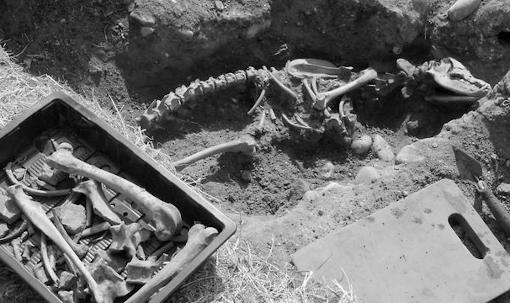
Suffolk has a giant devil dog named Black Shuck who made his first appearance in Blythburgh in 1577, when it broke down the door of Holy Trinity Church, killed a couple of people, burned claw marks in the floor and scampered off. He has reappeared on the usual occasions ever since.
Seven miles away at the site of Leiston Abbey, a dig in 2014 unearthed this big boy. And by big, I mean a vet estimated it would have stood seven feet tall and weighed 200 pounds. A very big boy indeed.
Here’s an article putting the two together. I mean, honestly – if you can’t trust a site called ufoholic.com, who can you trust? And here is a less breathless account in a local paper.
The dog was buried under the site of the monastery kitchens, which would have been demolished some time after the dissolution of the monasteries in 1537. Which would draw a delightful straight line from a very big dog to, decades later, a legend of a very big dog.
But the second article says indications are the dog may have been alive in the 18th C. and was buried with some ceremony. In which case, I’m surprised there isn’t a record of him in some local estate’s accounts. Further (expensive) analysis is probably way down on the county archaeologist’s priority list, which is a shame.
I think we can assume he was a very good boy.
Bonus: my first thought was a turnspit dog. But it turns out, that was an actual breed of little dog with a long body and short crooked legs. Which makes perfect sense for a dog that climbed inside a big hamster wheel and ran for a few hours a day.
The dogs were also taken to church to serve as foot warmers. One story says that during service at a church in Bath, the Bishop of Gloucester gave a sermon and uttered the line “It was then that Ezekiel saw the wheel…”. At the mention of the word “wheel” several turnspit dogs, who had been brought to church as foot warmers, ran for the door.
Queen Victoria kept a few retired turnspit dogs as pets, which wasn’t enough to rehabilitate their reputation. Poor things were considered so ugly and common they were allowed to go extinct.
February 24, 2021 — 7:32 pm
Comments: 5
More Boo!

Meet the lady from Grave 6705 in the bronze age city of Shahr-i Sokhta, now southern Iran. She died between 2900 and 2800 BC. She may have been a foreigner. She was aged between 28 and 35. She was surrounded by rich grave goods. She was six feet tall.
AND SHE HAD A FALSE EYE. Earliest found so far. It wasn’t a sphere; she wore it like an eye patch. It was made out of pitch and animal fat, so it is now black, but some specks of white paint on the surface means it may have been painted white like an eyeball. It was inlaid with fine gold wires radiating from the center, and there are some incised squiggly lines that may be imitation capillaries. I’m unclear whether they were inlaid.
It wasn’t a grave good; she wore it in life for quite a long time. There were two little holes where fine threads attached and held it in place. Both the prosthetic and the threads left marks on her bones. In fact, it looks like she had an abscess possibly caused by this thing.
That’s all we know and that’s cool enough.
But it’s been reported that she was a noblewoman or a priestess and she used the eye to convince people she could see into the future. Which is fun and all, but there’s not a scrap of evidence.
It’s part of an odd contradiction I’ve found since I’ve gotten interested in prehistory. We have never had better tools to examine the past. Radiocarbon dating, DNA testing, chemical analysis of teeth and other organic finds, ground penetrating radar, aerial analysis – it’s simply stunning the good, hard data we can glean now.
But the reports often come packaged with completely unsusbtantiated, fanciful conclusions. I mean, the official reports do (don’t get me started on where journalists go). I mean, we all like to speculate, sure. Maybe if you do the hard work to get a PhD in prehistory, your reward is that your wild-ass guesses get listened to.
February 23, 2021 — 9:32 pm
Comments: 9

